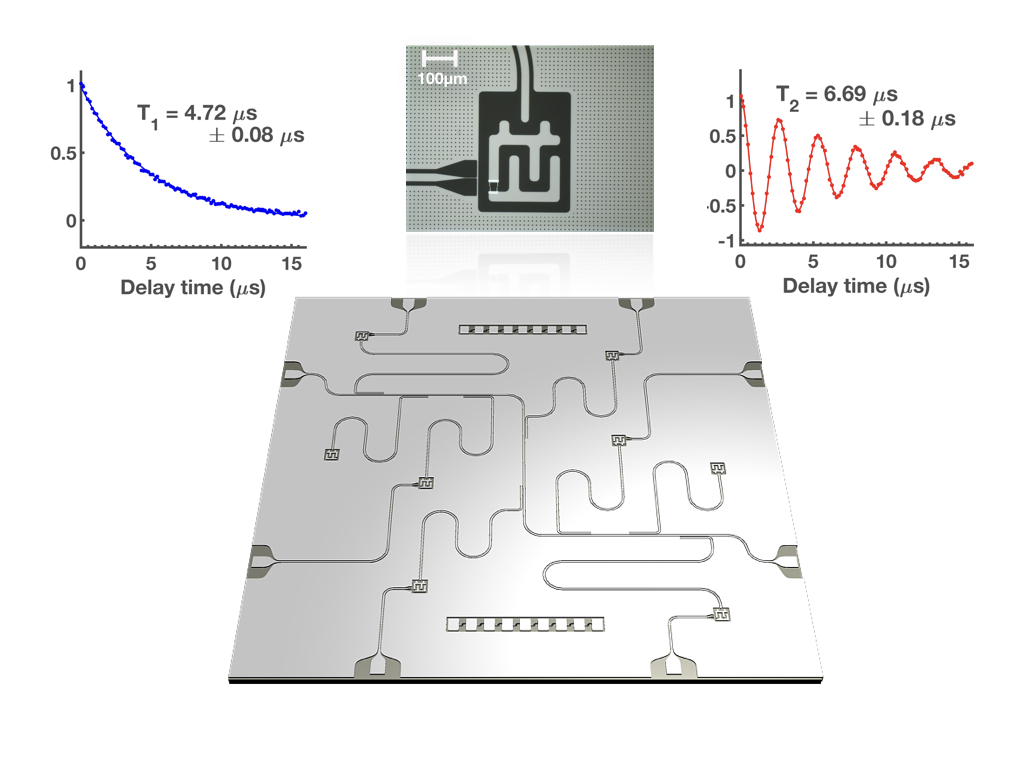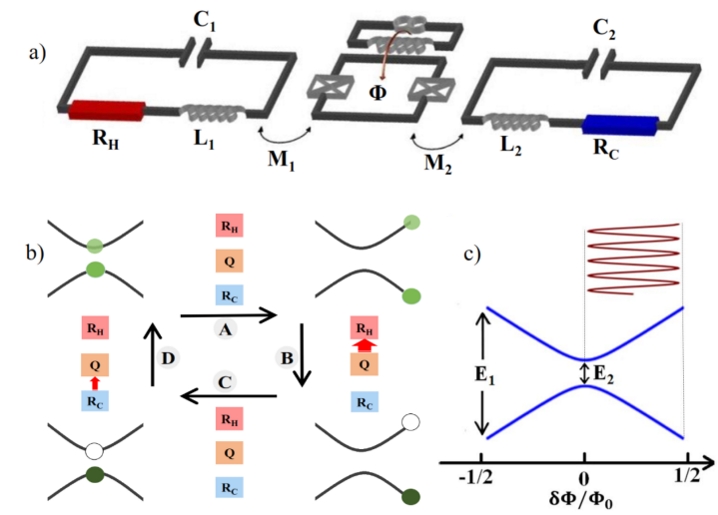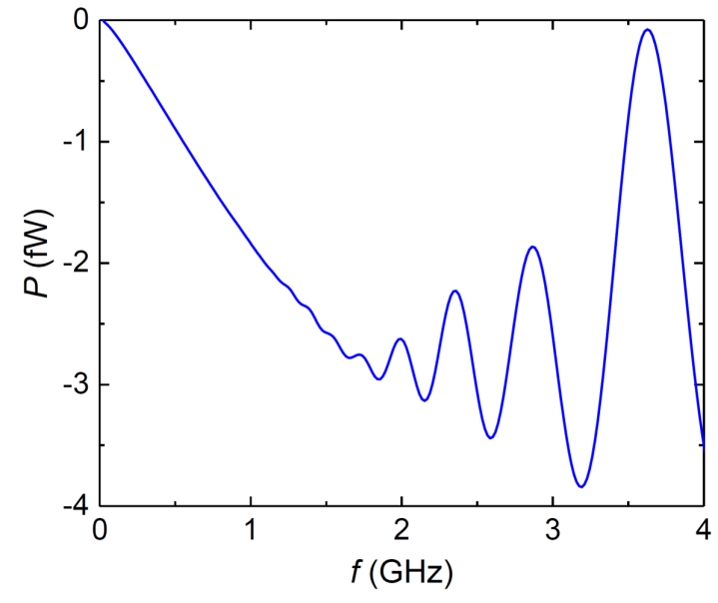Understanding the dynamics of heat transport in mesoscopic systems is a topic of great significance in many emergent quantum technologies; such as in superconducting qubits for quantum information studies, and calorimetry for quantum sensing applications.
To investigate this, we are developing a hybrid-device where we can look at the flow of heat across a superconducting qubit, between two mesoscopic thermal reservoirs. This has been given the popular name of a ‘Quantum Heat Engine‘, with the energy level spacing of the qubit expanding and contracting, and transporting heat between the two reservoirs, on a single quanta excitation basis.
To date, we have developed technology in the laboratory for superconducting qubit studies, based upon the prevalent transmon qubit design, as shown in the figure below, and reported here.

Figure 1
In parallel to this, PICO group has established itself as a leading research group for low temperature thermometry, and we use this expertise to generate and measure heat flow across our devices, using Normal Metal – Insulator -Superconductor (NIS) heterostructure based bolometry.
Is it our aim to use this quantum heat engine to further our understanding of heat transport in the quantum limit, and provide a platform for quantum thermodynamic experiments, such as those reported here .
Such a quantum heat engine can be based on a superconducting qubit coupled to two LC-resonators each including a resistor acting as a reservoir (Fig. 2).
Here we find various operation regimes: nearly adiabatic (low driving frequency), ideal Otto cycle (intermediate frequency), and importantly non-adiabatic coherent regime (high frequency). In the non-adiabatic regime we observe theoretically strong coherent oscillations of the cooling power as a function of frequency as shown in Fig. 3. Our goal is to realize such a quantum refrigerator experimentally, with our first ‘static’ demonstration reported in arXiv:1801.09312.

Figure 2

Figure 3